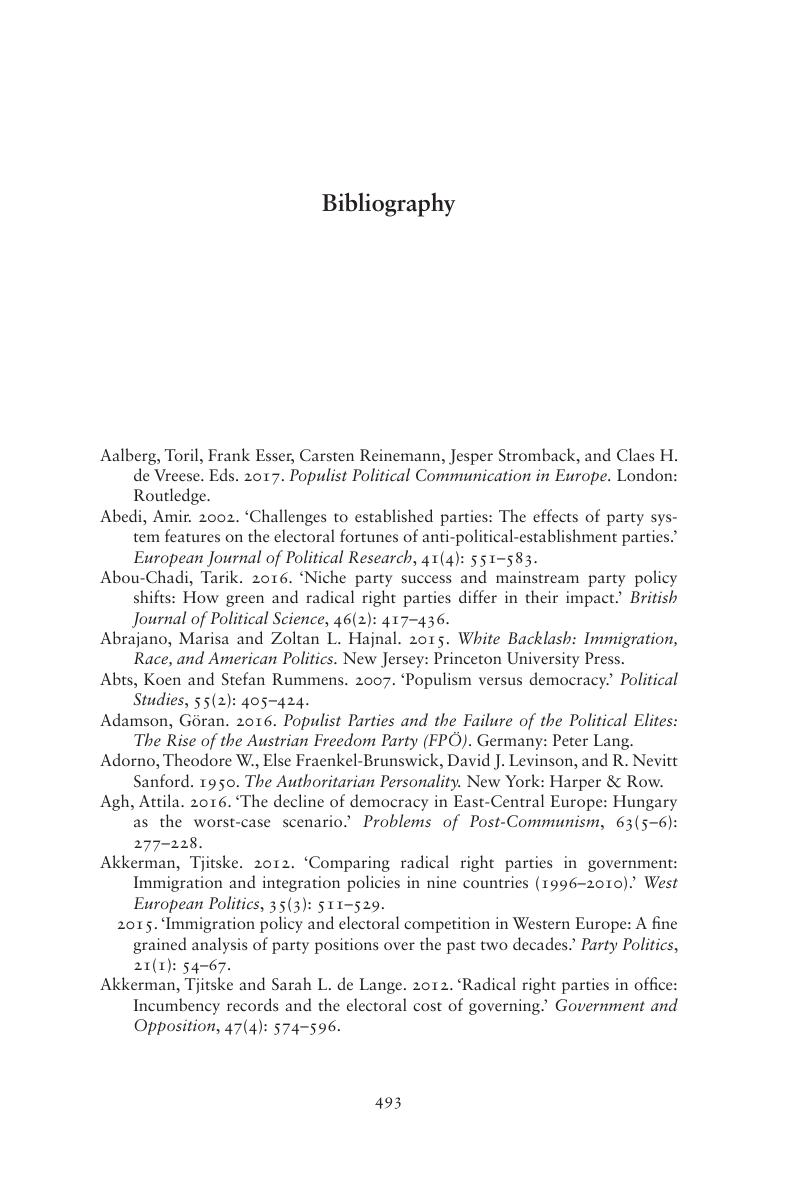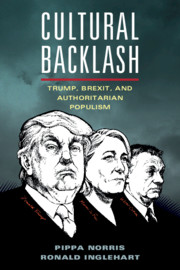Bibliography
Published online by Cambridge University Press: 11 February 2019
Summary

- Type
- Chapter
- Information
- Cultural BacklashTrump, Brexit, and Authoritarian Populism, pp. 493 - 534Publisher: Cambridge University PressPrint publication year: 2019



